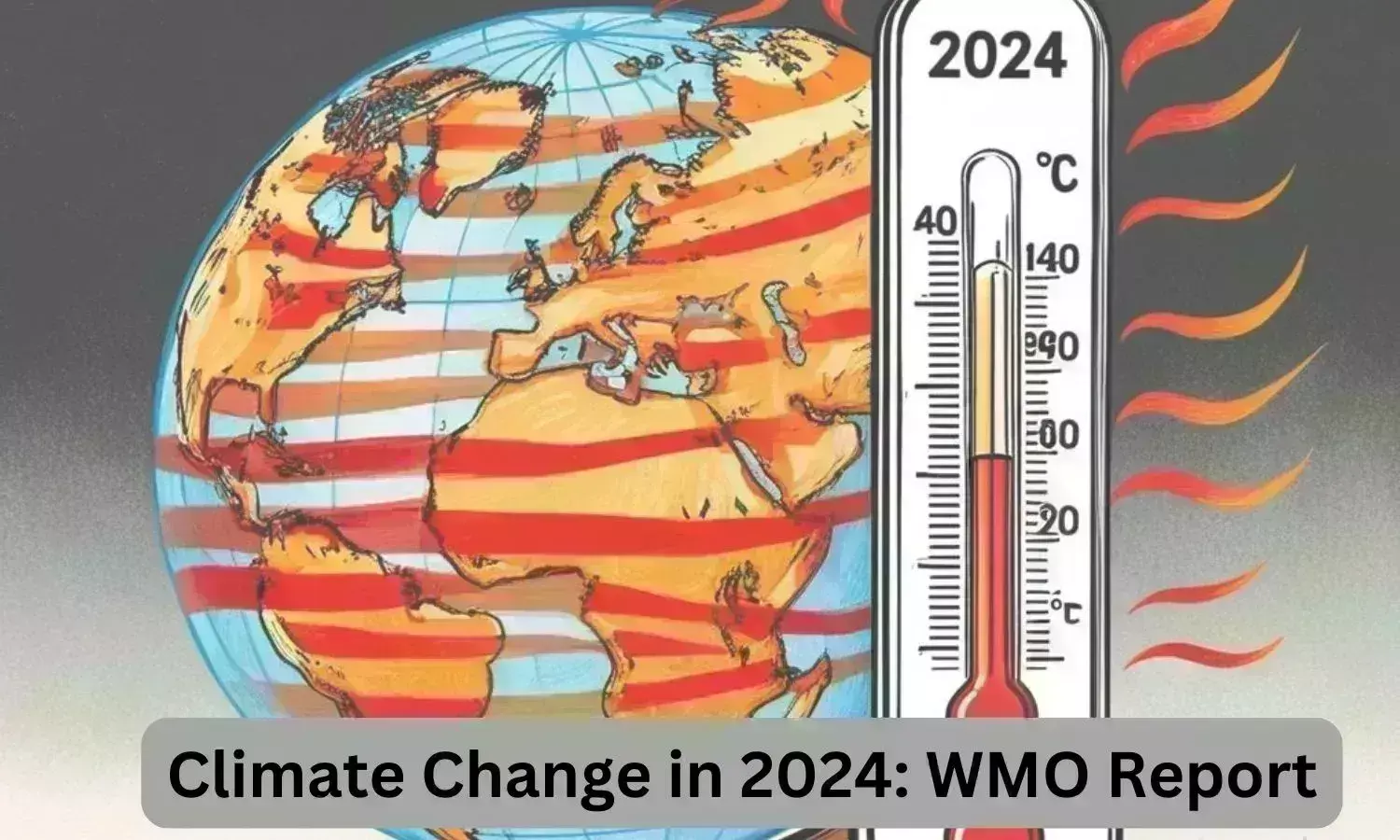Climate Change in 2024: WMO Report indicates alarming trends
Another significant year, 2024, is coming to an end. According to World Meteorological Organisation, this year has been

Another significant year, 2024, is coming to an end. According to World Meteorological Organisation, this year has been the warmest year on record after an extended streak of exceptionally high monthly global mean temperatures.
The World Meteorological Organisation report that was issued on the first day of the UN climate change conference COP29, in Baku, Azerbaijan, highlights the ambitions of the Paris Agreement in peril. The Paris Agreement is a legally binding international treaty that aims to limit global warming and its effects. The agreement also aims to limit the increase in global average temperature to well below 2C pre-industrial level and 1.5C above preindustrial levels. Along with the temperature increase, there have been several significant effects of climate change, including sea level rise, glacier loss, etc.
Highlights of the WMO report.
Record-breaking temperatures
The global average temperature from January to September 2024 was 1.54°C above pre-industrial levels. This was driven by a strong El Niño event.
The January – September 2024 global mean surface air temperature was 1.54 °C (with a margin of uncertainty of ±0.13°C) above the pre-industrial average, boosted by a warming El Niño event, according to an analysis of six international datasets used by WMO. Long term temperature increases will lead to most damaging impacts of climate change.
The global mean temperature in 2024 is on track to outstrip the temperature even of 2023, the current warmest year. For 16 consecutive months (June 2023 to September 2024), the global mean temperature likely exceeded anything recorded before, and often by a wide margin, according to WMO’s consolidated analysis of the datasets.
Ocean warming
Ocean heat trends continue to increase, and the oceans absorbed about 90% of the excess heat from global warming in 2023.
Ocean heat content in 2023 was the highest on record and preliminary data shows 2024 has continued at comparable levels. Ocean warming rates show a particularly strong increase in the past two decades. From 2005 to 2023, the ocean absorbed on average approximately 3.1 million terawatt-hours (TWh) of heat each year. This is more than 18 times the world’s energy consumption in 2023.
About 90% of the energy that has accumulated in the Earth system is stored in the ocean and it is therefore expected that ocean warming will continue – a change that is irreversible on centennial to millennial timescales.
Glacier loss
Glaciers are losing ice at an accelerating rate, with 2023 seeing the fastest rate of glacier recession since records began 70 years ago.
Glacier loss is worsening. In 2023, glaciers lost a record 1.2-meter water equivalent of ice – about five times the amount of water in the Dead Sea. It was the largest loss since measurements began in 1953 and was due to extreme melting in North America and Europe. In Switzerland, glaciers lost about 10% of their remaining volume in 2021/2022 and 2022/2023.
Greenhouse gas emissions
2023 saw the highest observed levels of greenhouse gas emissions on record, and real-time data indicates they continued to rise in 2024.
Greenhouse gases reached record observed levels in 2023. Real time data indicate that they continued to rise in 2024. The atmospheric concentration of carbon dioxide (CO2) has increased from around 278 ppm in 1750 to 420 ppm in 2023, an increase of 51%. This traps heat and causes temperatures to rise.
Water resources
Sea level rise
Sea level rise is accelerating because of thermal expansion of warmer waters and melting glaciers and ice sheets. From 2014-2023, global mean sea level rose at a rate of 4.77 mm per year, more than double the rate between 1993 and 2002. The El Niño effect meant it grew even more rapidly in 2023. Preliminary 2024 data shows that, with the decline of El Niño, it has fallen back to levels consistent with the rising trend from 2014 to 2022.
Sea ice extent
Antarctic sea-ice extent – both the annual minimum in February and the maximum in September - was the second lowest in the satellite record (1979-2024) after 2023. Arctic sea-ice minimum extent after the summer melt was the seventh lowest in the satellite record and the maximum was just below the long-term average of 1991-2020.
Weather and climate extremes
Weather and climate extremes undermined sustainable development across the world, worsening food insecurity and exacerbating displacement and migration. Dangerous heat afflicted many millions of people throughout the world. Heavy precipitation, floods and tropical cyclones led to massive loss of life and damage. Persistent drought in some regions was worsened by El Niño.
The section on climate impacts, provided by United Nations partners, will be expanded in the final report on the State of the Global Climate 2024, due to be published in March 2025.
Impact of Global Warming on India
Global warming is expected to significantly impact India through more frequent and intense heatwaves, unpredictable monsoon patterns leading to droughts and floods, rising sea levels threatening coastal areas, declining agricultural productivity, and overall increased vulnerability to extreme weather events, potentially impacting food security and the economy of the country, particularly affecting the large population living in vulnerable coastal regions and rural areas. It will lead to issues like water scarcity and economic losses. To combat this, India needs to focus on transitioning to renewable energy sources, promoting sustainable agriculture practices, and implementing adaptation strategies like flood protection systems and water conservation measures.

